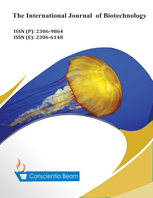Review of Biological Impacts of Genetically Engineered Crops and Neonicotinoid Treated Seed Use on Staten Island
DOI:
https://doi.org/10.18488/journal.57/2016.5.4/57.4.62.68Abstract
Genetically modified organism (GMO) crops particularly Roundup Ready Crops have been widely used in commercial agriculture in the United States in general and Staten Island in particular. However, its use has promoted concerns about the potential environmental effects of this technology. Therefore, this work was initiated to review impact of GE crops and Neonicotinoid to biodiversity, special focus on bees, birds, and super weeds development at Satan Island. Glyphosate herbicide is now widely used for growing Roundup Ready crop, like maize and soy bean. Scientists reported that using glyphosate herbicide by far better than using the previously used herbicide to the environment and biodiversity. It is also known that super weed may develop through gene flow from Roundup Ready Crops to its wild relatives and develop resistance against roundup. However, this might not be a problem in Staten Island where there is no wild relative species for widely grown Roundup Ready Crops like corn and alfaalfa.With regards to Neonicotinoids, it has lower toxicity to mammals like birds, and fish than other non-target insect species specially bees and other pollinator. The effect of Neonicotinoids to non-target species can be minimized using Fluent Agent in seed coating the which reduces dust contamination. Therefore, the use of Genetically Engineered Crops and Neonicotinoid Treated Seed needs special care and management in order to minimize its damage to non-target insect species.

